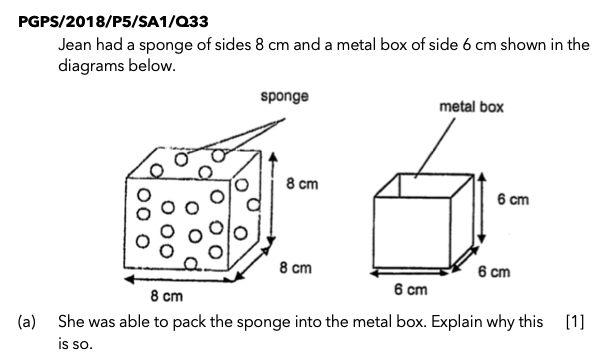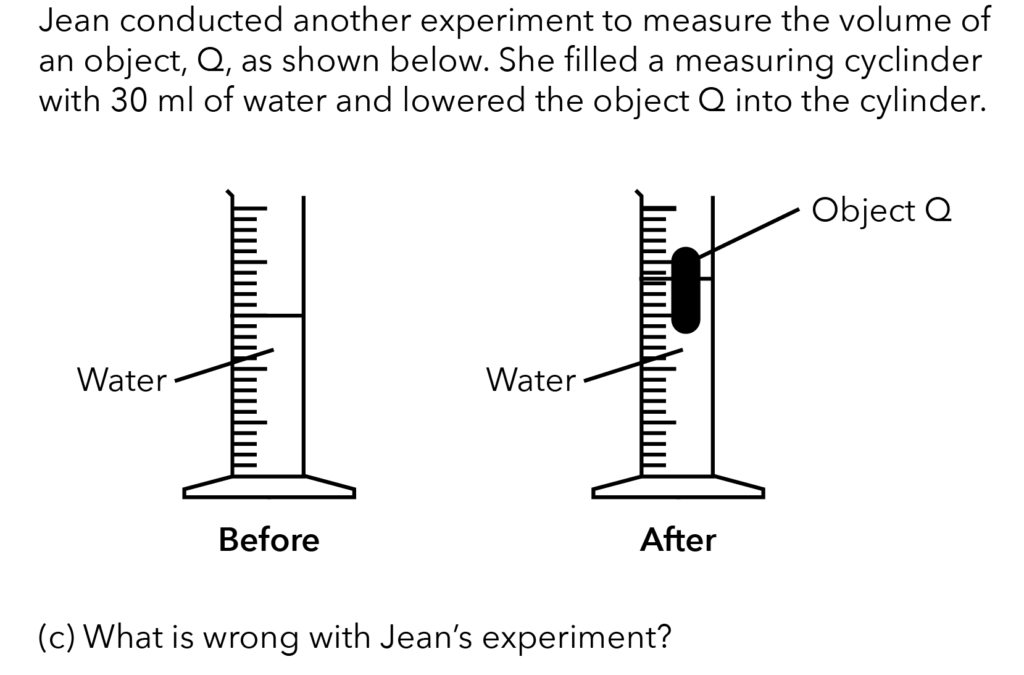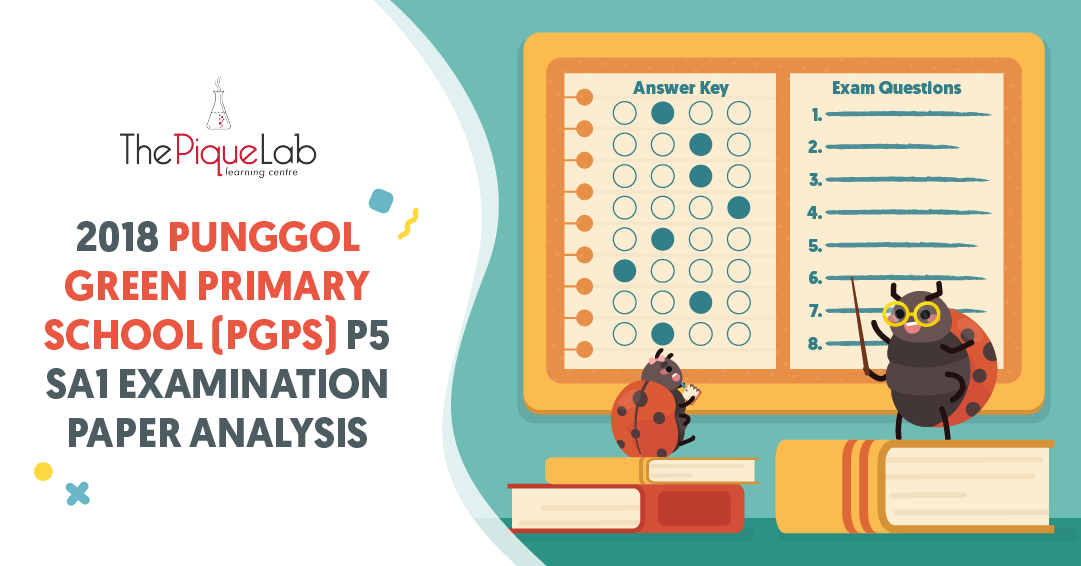Hello everyone & welcome back to our Examination Paper Analysis series!
With the SA1 examinations round the corner, I hope today’s analysis will better prepare you for your upcoming Science examinations!
Today’s analysis will be on the 2018 Punggol Green Primary School (PGPS) P5 SA1 examination paper.
As usual, I will be sharing with you the topic weightage in the paper, as well as discussing 2 interesting parts of an open-ended question.
Topic Weightage in The 2018 PGPS P5 SA1 Examination Paper
Students in Punggol Green Primary have learnt Cells, Water Cycle, Reproduction in Humans, and Reproduction in Plants during the first semester of Primary 5.
However, it is the Primary 4 topic of Heat Energy that has the highest weightage in this paper with 11 questions. The rest of the questions are split across the other topics from P3, P4 and P5 with 2 to 3 questions each.
Students tend to spend more time and effort on topics taught in Primary 5 during their preparation for P5 SA1, which is neither wrong nor surprising. However, from the past examination paper analyses, it is quite evident that Heat Energy is very important even during the Primary 5 and Primary 6 years, despite the topic being taught in Primary 4. Thus, it is crucial for students to be well versed in the topic of Heat Energy to minimise the loss of marks in their Science examinations.
Other than Heat Energy, Matter is another topic taught in P4 that students tend to neglect during their exam preparation. As such, the 2 parts of the question that I will be analysing for today will be on “Matter”.
Read Also:
Let’s Take A Look At Question 33(a)

Source: Punggol Green Primary School – 2018 P5 SA1 Science Examination Paper [Q33]
Thought Process
This question is testing the students on the 3 states of matter and their properties.
What are the 3 states of matter?
They are Solid, Liquid and Gas. Different states of matter have different properties.
Solid State
Substances in the solid state have a definite shape and a definite volume. They cannot be compressed.
Liquid State
Substances in the liquid state do not have a definite shape. They can take the shape of the container that they are in. They have a definite volume and cannot be compressed.
Gaseous State
Substances in the gaseous state do not have a definite shape. They also do not have a definite volume and can be compressed.
Can you identify the correct state of matter for the sponge? Many students will be able to answer that the sponge is in the solid state, which is correct.
Here comes the million-dollar question:
“Since the sponge is in the solid state, how can it be possible for the sponge to fit into a container that has a smaller capacity? Does this mean that the properties of substances in the solid state that we have been learning all this time are wrong?”
No! The properties of substances in the solid state will still hold true!
This is because there’s something special about the sponge. The sponge is porous, which means that there are many holes in it that are occupied by air. Hence, there are plenty of air spaces in the sponge.
Recall one of the properties of air – air (gas) can be compressed as it does not have a definite volume.
Therefore, it is not the solid sponge that can be compressed.
It is the air in the sponge that can be compressed, allowing the sponge to fit into a container with a smaller capacity.
Answer
Step 1: State what is in the sponge.
There are air spaces in the sponge.
Step 2: State the property of air.
Since air does not have a definite volume and can be compressed,
Step 3: Link back to the question.
Jean was able to pack the sponge into the metal box, which has a smaller capacity.
Let’s Take A Look At Question 33(c)

Source: Punggol Green Primary School – 2018 P5 SA1 Science Examination Paper [Q33c]
Thought Process
This part of the question tests students on how to measure the volume of an irregular object, which is a commonly tested concept in both multiple-choice questions and open-ended questions.
When students learn about measuring the volume of an irregular object, they learn that three things are needed:
- a liquid (usually water)
- the object
- a measuring cylinder.
Other than having the equipment mentioned above, the object must also possess a certain property in order for us to be able to measure its volume accurately.
Do you know what the property is?
Yes, the object must be able to sink in the water!
When the object is not fully submerged, the increase in the water level does not account for the entire volume of the object. It only measures the volume of the part of the object that is in the water.
Answer
Hence, the answer to Part (c) is “The object is not fully submerged in the water.”
I hope that this analysis has given you a better understanding of some of the questions that can be tested on the topic of Matter.
Moving Forward
I hope this article has helped you gain stronger insights to tackle these questions on Matter.
Stay tuned for more articles!

If you like our methodology, we've some upcoming workshops:







